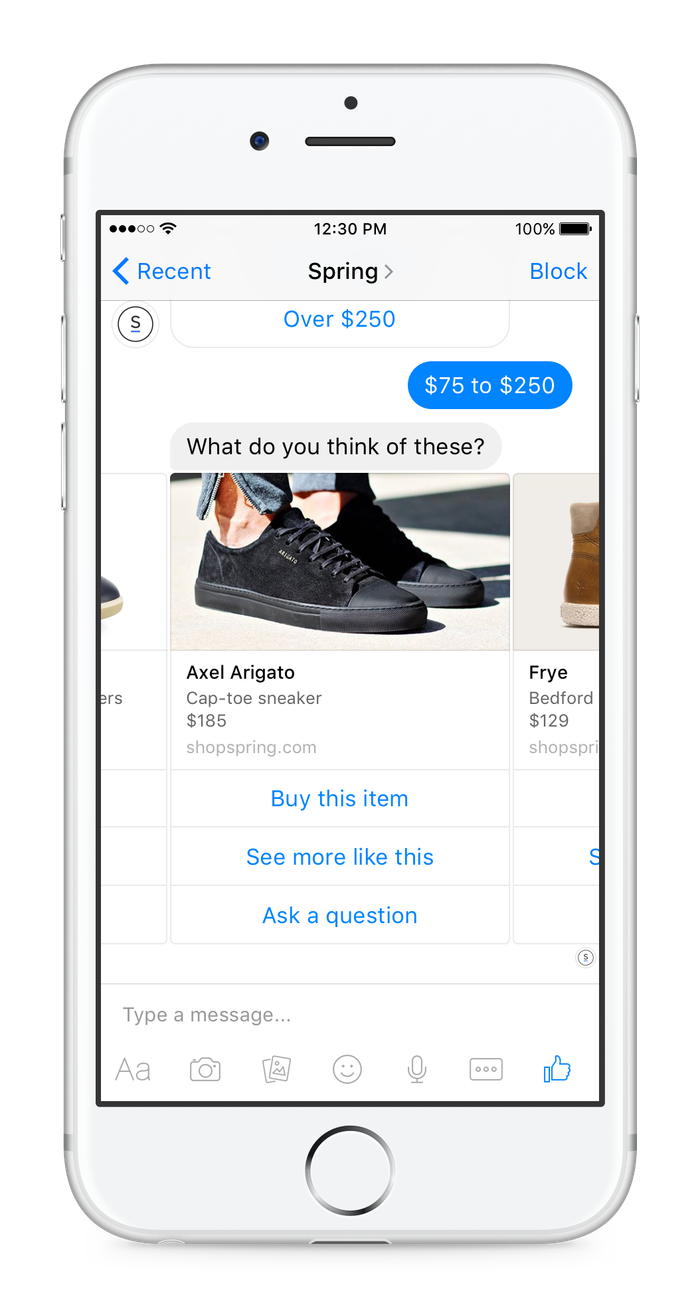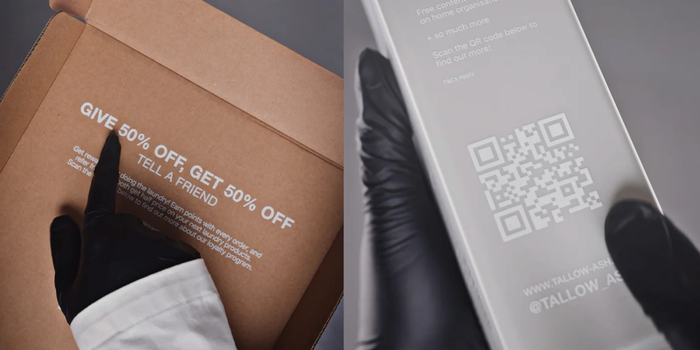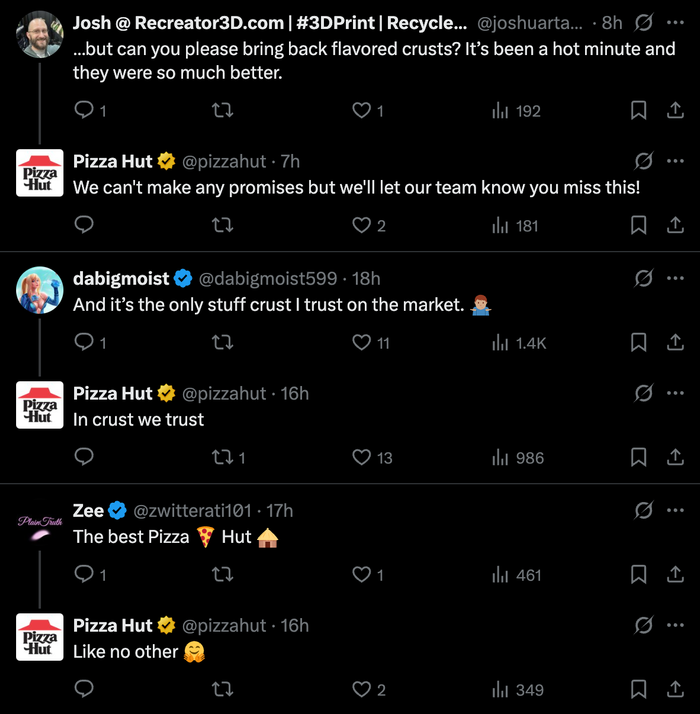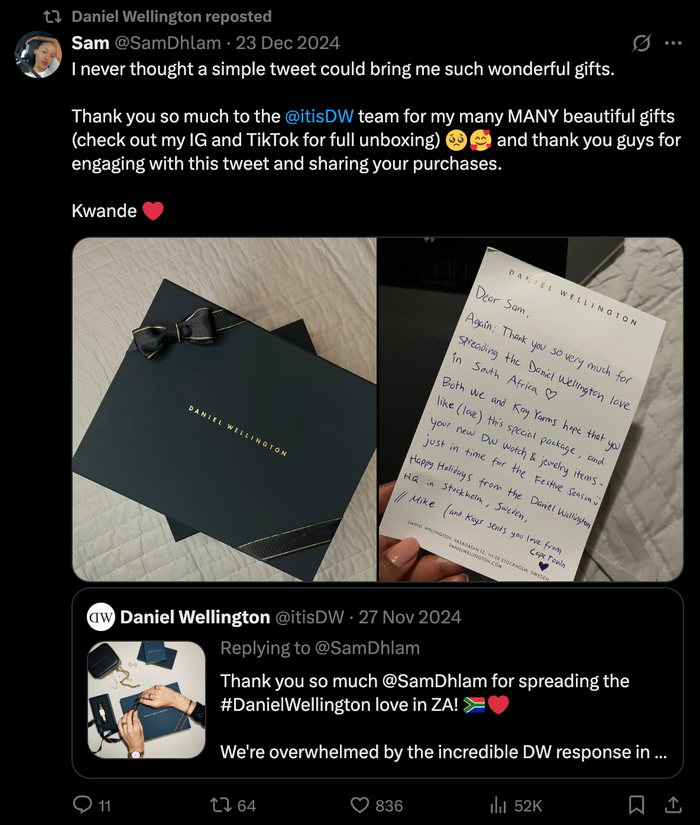You work hard to bring in new customers, but keeping them engaged feels like a full-time job. Before you know it, they drift away, and you’re back to square one – chasing the next lead.
Many existing customers quietly disappear not because they were unhappy – but because no one followed up, checked in, or made them feel valued.
Managing client relationships is one of the most profitable growth strategies for a small business, but shouldn’t feel like another task on your never-ending to-do list. Here’s how to make it easier, even with limited time and resources.
Why customer relationship management matters

🚨 A customer who never hears from you again is a customer already lost.
Customers don’t just walk away. They fade away. First, they stop engaging. Then, they forget about your business. And when they need your product or service again, they go to someone else – if you neglect them.
You shouldn’t do that, because:
✅ It’s cheaper than chasing new customers
Acquiring a new customer costs five to seven times more than keeping an existing one. Every customer you lose means wasted marketing dollars to replace them.
✅ Repeat customers spend more
Loyal customers don’t just buy again – they buy more often and at higher price points than first-time buyers. Studies show that increasing customer retention by just 5% can boost profits by 25-95%.
✅ Happy customers do your marketing for you
Satisfied clients would happily refer your business to others. And word-of-mouth referrals are four times more effective than paid ads. If you keep customers engaged, they’ll bring in new business for free.
✅ It builds trust, trust drives sales, sales drive revenue
People buy from businesses they trust. When you maintain regular communication, respond quickly, and show customers they matter, they become long-term buyers instead of one-time transactions.
✅ It helps you improve your business.
Customers tell you exactly what they love, what they hate, and what they need. If you listen, you can fix problems before they cause churn and adjust your offers to match what customers truly want.
If you’re always chasing new customers while ignoring the ones you already have, you’re working harder than necessary. Managing client relationships keeps customers coming back, spending more – and bringing others with them.
10 simple ways to manage customer relationships as a small business
#1 — Keep track of customer interactions
Chasing new clients is important, but without tracking interactions, you risk losing the ones already interested.
Every conversation with a customer – whether it’s an email, a phone call, or a quick chat – holds valuable information. But when those interactions aren’t tracked, opportunities go to waste.
Here’s how small businesses can stay organized without overcomplicating things:
- Use a shared document – A simple Google Sheet can track inquiries or purchases. List the customer’s name, date of interaction, and next steps. This works well for solopreneurs or small teams that need a quick way to stay on top of conversations.
- Tag important emails – Create labels in Gmail or Outlook (e.g., “Hot Lead,” “Follow-Up Needed,” “Existing Client”). You can easily scan your inbox and identify which messages need a response.
- Take quick notes – A small notebook or a notes app (like Google Keep or Notion) can help you jot down key details from calls or in-person meetings. Companies that rely on in-person interactions, like consultants and service providers, will find this tip particularly valuable.
- Set calendar reminders – If a customer says, “Check back in three weeks,” set a calendar alert so you don’t forget. A simple Google Calendar notification can be all you need to stay proactive.
At some point, spreadsheets and reminders won’t cut it anymore – especially when dealing with multiple clients. That’s where Capsule CRM makes life easier. It automatically logs emails, calls, and interactions in one place, so you always know where each customer stands.

Instead of searching through old emails or sticky notes, you can see a full history of every conversation and keep relationships strong from day one.
#2 — Follow up
Many small business owners hesitate to follow up because they don’t want to come across as pushy. Following up is more about showing customers you care than about closing deals, though. A well-timed check-in reminds them you’re there to help, not just to sell.
Done right, follow-ups:
✔ Keep you visible without being intrusive
✔ Strengthen relationships by offering value, not just promotions
✔ Help you understand their needs, so you can serve them better
But if you’re doing everything manually, it can eat up hours of your week.
How to keep follow-ups effortless yet personal:
- Send a thank-you message right after a purchase or consultation — A quick note makes people feel valued and confirms they made the right choice. It doesn’t have to be long or overly formal—even a simple “Thanks for your business, looking forward to working together!” does the job.
- Check in when it makes sense — A casual follow-up a few weeks or months later keeps the door open without feeling pushy. Instead of generic messages, make follow-ups contextual. If your customer mentioned a specific time to check back, don’t reach out earlier. If you saw their company in the news or on LinkedIn, reference it: “I saw your recent feature – congrats! Let’s catch up when you have time.” Small details make messages feel thoughtful, not automated.
- Remind them when it’s time to reorder — If you sell something people buy regularly, a simple nudge can bring them back without applying pressure. A simple “You might be running low on [product] – check your stock and reorder if needed!” feels like helpful customer service rather than a sales push. If you offer subscriptions, an automated reminder about upcoming renewals makes the process smoother.
3 simple rules for effective follow-ups
- Don’t follow up too soon – Too soon can feel like pressure; too late, and they forget you. Stick to their timeline when possible. People need time to experience your product or service. Following up the day after a purchase might feel like rushing
- Don’t disappear for too long – If months pass without a word, they may forget about you. A check-in every 30-60 days (or based on their buying cycle) keeps the relationship warm
- Don’t be pushy – If they don’t respond, don’t flood their inbox. Instead, provide value in your follow-ups – share a helpful tip, an industry insight, or a small offer they might appreciate.
The follow-up sequence to copy
The best follow-ups add value rather than just asking for a sale. Here's a structured sequence that keeps communication natural, relevant, and customer-focused.
Step 1: The immediate thank-you (within 24 hours)
Purpose: Acknowledge their business and confirm their decision.Tone: Warm, appreciative, and personal.Example:"Thanks for your business, [Name]! Looking forward to working together. Let me know if you have any questions in the meantime!"
Step 2: the value-add check-in (after 2-4 weeks)
Purpose: Show continued interest while offering something useful.Tone: Helpful, non-salesy, and timely.Example:"Hi [Name], I wanted to check in and see how things are going with [product/service]. I also came across [resource, tip, or industry update] that might be helpful for you!"
Step 3: the contextual follow-up (after 1-2 months)
Purpose: Keep the relationship warm by referencing something relevant.Tone: Personalized and thoughtful.Example:"Hey [Name], I saw your recent [news, LinkedIn update, project] – congrats! Hope all is going well. Let’s catch up when you have time!"
Step 4: The reorder or renewal reminder (based on buying cycle)
Purpose: Make reordering easy and natural.Tone: Informative, not salesy.Example:"Just a quick note—many of our customers reorder [product/service] around this time. Let me know if you need a restock, or if I can help with anything!"
Step 5: The “No response” follow-up (two-three months after silence)
Purpose: Reignite the conversation if they’ve gone quiet.Tone: Low-pressure, helpful, and open-ended.Example:"Hey [Name], just checking in – I know things get busy! If you still need [service/product], I’d be happy to help. If now isn’t the right time, no worries at all – just wanted to stay in touch!"This gives them an easy out, which reduces pressure while keeping the door open.
#2 — Personalize communication based on customer preferences
Small businesses have an edge that big corporations don’t: the ability to treat customers like real people, not just numbers in a database. And the best part? It costs nothing but delivers lasting results.
A personal touch keeps customers coming back, encourages referrals, and turns one-time buyers into lifelong supporters.
Here are four simple layers of personalization to make every interaction more relevant:
Recognize past purchases
Customers appreciate when businesses remember what they’ve bought before. If a client regularly orders coffee beans, offer them a discount on their favorite blend or suggest a new roast they might enjoy.
Example: “We noticed you love our Colombian roast – want to try our new single-origin blend from Guatemala? Here’s 10% off.”
Use behavioral cues
Not all customers engage with your business in the same way. Some open every email, while others only visit your website during sales. Adjust your messaging based on their behavior.
Example: If someone browses a product page multiple times but hasn’t purchased, send a gentle nudge: “Still thinking about [product]? Here’s what customers love about it.”
Reference past interactions
Small touches, like recalling a previous conversation or inquiry, show customers you’re paying attention. A simple note in your records can help personalize follow-ups.
Example: If a client asked about social media marketing a few months ago, check in: “You mentioned wanting to boost engagement – are you still exploring options?”
Offer relevant recommendations
Instead of sending generic promotions, suggest products or services that align with customer preferences. Whether it’s an upsell, a complementary item, or a seasonal offer, relevance makes a difference.
Example: “You booked a family photoshoot last year – thinking about an updated session for the holidays?”
Start small – pick one or two layers that fit your business and test what works. Overloading customers with personalization can feel unnatural.
#3 — Respond quickly to inquiries
Fast responses = more trust, more sales.
For small businesses, every lead matters. If a customer sends an inquiry and doesn’t hear back quickly, they’re gone – off to a competitor who replies faster. Even a one-hour delay in responding can reduce conversions by up to 10 times.
How to respond faster without losing the human touch
- Acknowledge immediately – Use auto-replies, but make them sound warm and real. Instead of: "We have received your message and will get back to you shortly.", try: "Hey [Name], thanks for reaching out! We’ll get back to you within [X hours], but if it’s urgent, call us at [number]. Looking forward to helping you!"
- Use chatbots wisely— AI can handle FAQs, but complex questions need a human touch. A hybrid approach (bot for basics, human for deeper inquiries) usually works best. Chatbots aren’t as complex as they seem – you can easily set one up on Messenger or through simple, no-code tools

- Set response time expectations – If it takes longer than a few hours to reply, tell them when to expect an answer. A simple "We’ll have a full response for you by [time]" keeps them from feeling ignored
- Prioritize urgent messages – If a potential customer asks about pricing or availability, don’t let them wait. Have a system (even if it’s just a color-coded inbox) to identify sales inquiries for a faster response.
#4 — Reward loyalty
Loyal customers are the foundation of any successful small business. They buy from you again, recommend you to others, and are more forgiving when things go wrong.
Keeping them engaged doesn’t require a huge budget – just thoughtful gestures that make them feel valued.
A small gesture can have a big impact. Whether it’s a personalized message, a small discount, or early access to something new, the goal is to acknowledge their loyalty genuinely.
One way to do this is through exclusive perks. A long-time customer could get priority booking or an invite to a private sale. These don’t cost much, but they create a sense of appreciation.
Another approach is rewarding referrals. If a customer brings in a new client, offer a small reward – maybe a discount, a free add-on, or store credit.

People love sharing businesses they trust, and a simple incentive can encourage them to do it more often.
#5 — Engage on social media
For many customers, social media is the easiest way to reach a business. Some won’t email or call – they’ll send a direct message, leave a comment, or tag you in a post. Younger generations, particularly millennials and Gen Z, prefer social media for communication and information sharing.
If you ignore these touchpoints, you risk losing potential buyers before the conversation even starts. That’s why you should
- Reply to every comment and message — If someone asks a question or leaves a review, respond. A quick reply shows you’re paying attention and encourages further interaction. Negative comments matter too. Ignoring a complaint can escalate the issue, while a well-handled response can turn an unhappy customer into a loyal one. Address concerns professionally, offer solutions, and show that you’re willing to listen.
Example: Southwest Airlines actively responds to both praise and criticism on X (Twitter), handling customer concerns publicly:

If a complaint needs a deeper conversation, acknowledge it publicly, then move it to DMs to resolve it privately. This shows transparency without putting sensitive details on display.
Create an engagement loop — Don’t let interactions end with a single reply. If a customer shares a photo using your product, comment on it. If someone replies to your post, engage with their response.
Every comment, review, or message is a window into what your customers think. Take Pizza Hut as an example. They noticed a wave of customers mentioning how much they missed their flavored crust. If enough people keep asking for it, it might just make a comeback.

Acknowledge and feature your customers — Share user-generated content, highlight success stories, and celebrate your clients.

#6 — Ask for feedback and act on it
Customer feedback is one of the easiest and most valuable ways to improve your customer relations. It’s direct insight into what’s working, what’s not, and what customers want. If you’re not paying attention, you’re missing free market research!
Instead of guessing what to improve, let your customers tell you. The more you ask, the better you can refine your products, services, and customer experience. Here are three simple ways to gather useful feedback:
Surveys – Structured feedback for clear insights
Surveys help you gather feedback in a focused, measurable way. They work best when they’re short and to the point. After a purchase or interaction, send a quick survey with questions like:
- “How satisfied are you with your experience?” (1-5 scale)
- “What’s one thing we could improve?”
- “Would you recommend us to a friend? Why or why not?”
Use free tools like Google Forms or Typeform to create easy-to-fill surveys. Keeping it under two minutes increases response rates.
Online questions
If people are discussing a feature they miss or a product they want back, businesses can turn that conversation into action.
For example, in the previous section, Pizza Hut discovered that some customers missed their flavored crust. Instead of relying on scattered comments, they could run a poll or ask directly:
- “Would you like to see flavored crust back on the menu? Comment below!”
- “Which flavor would you choose if we brought it back? Vote now!”
Direct emails – Personalized, relationship-building feedback
Some feedback is best gathered in a one-on-one setting. Sending a direct email after a purchase or service completion can bring in detailed insights. Instead of a generic message, make it personal:
- “Hey [Name], we loved working with you! Was there anything we could have done better?”
- “Thanks for choosing us! Your input helps us improve. If you have 2 minutes, we’d love to hear about your experience.”
Customers are more likely to respond when they feel their input matters. If you notice recurring themes in responses, it’s a clear sign of something to improve.
The real value of feedback? Acting on it.
Feedback only works if you do something with it. If multiple customers mention the same issue or request the same feature, it’s worth considering. Even small changes based on feedback show that you listen – and that builds trust, loyalty, and long-term success.
Keep customers close, and growth with follow
For small businesses, time and resources are always stretched thin. That’s why keeping your customers is just as important – if not more – than finding new ones.
Make your clients feel valued. Strong customer relationships aren’t built overnight, but when built right, they can turn one-time buyers into long-term supporters.
The more you invest in your existing customers, the more they’ll invest back in you.
Staying organized makes this process much easier. A CRM helps you manage customer relations without adding to your workload. Give Capsule CRM a try today!



